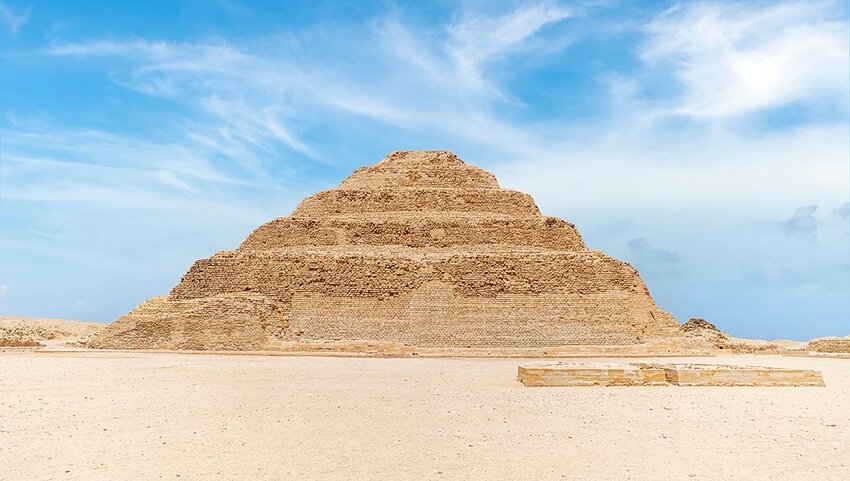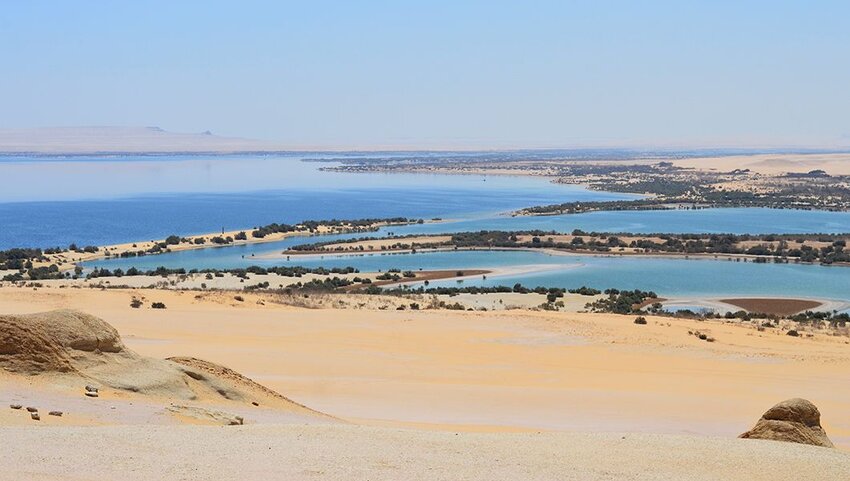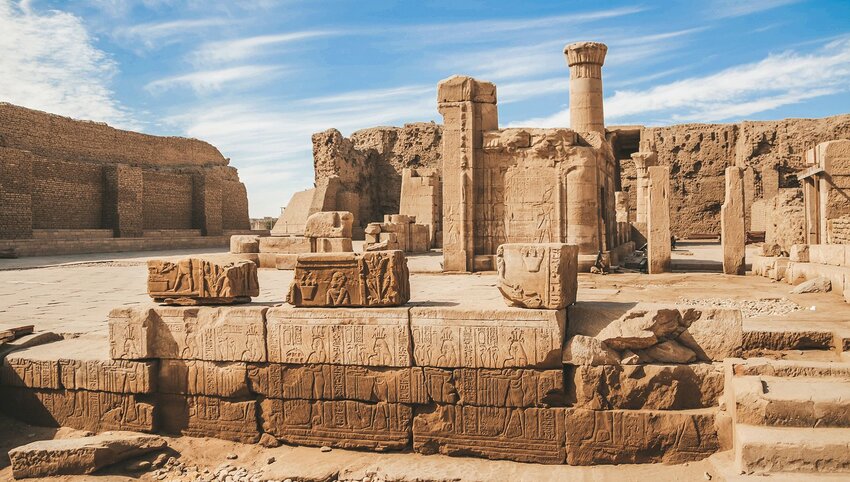Egypt boasts a rich history dating back millennia, to an ancient era when this region served as the cradle of civilization. Ancient Egypt pioneering the development of concepts such as agriculture, government, and writing, just to name a few. Though those early Egyptian societies are long gone, many cultural relics from their heyday remain, thus making Egypt one of the most alluring countries to visit for history buffs and curious explorers alike.
While the Great Pyramids are undoubtedly the most well-known tourist attractions in Egypt, there are many other incredible archaeological sites — not to mention a few natural wonders — that are just as worthy of experiencing. Here are six essential sites to see in Egypt beyond the Great Pyramids.
Abu Simbel

Built during the reign of King Ramses II from 1279 to 1213 BCE, Abu Simbel is a stunning archaeological marvel known both for its deep history and majestic sandstone cliffs. The site is home to two massive temples carved into the natural rock formations, with the main temple featuring four monolithic 66-foot statues of Ramses II flanking its entrance. These statues don’t just represent the rich cultural heritage of ancient Egypt but Greece as well — on the southernmost pair of these sculptures you can find ancient graffiti etched into the stone by Greek mercenaries from the 6th century BCE, providing some early evidence of the Greek alphabet. The main temple — which is dedicated to sun gods Amon-Re and Re-Horakhte — extends 185 feet deep into the sandstone, and is particularly stunning around February 22 and October 22 each year. On or around these two days, the temple's halls are entirely illuminated by the perfectly-positioned morning sun, with the sun’s rays penetrating the entrance and extending all the way to the temple’s innermost shrine. Abu Simbel is also home to a smaller temple dedicated to queen Nefertari located just north of the larger complex.
Many centuries passed before the temple was finally rediscovered by a Swiss researcher in 1813, but by the 20th century Abu Simbel became threatened by a newly-formed reservoir created by the nearby Aswan High Dam. Thankfully, preservation efforts disassembled the temples and reconstructed them on higher ground to ensure this UNESCO Heritage Site lasted for centuries to come. Given the location’s proximity in southern Egypt — far from Cairo — visiting Abu Simbel requires a significant trip, but rest assured, the site is well worth the effort.
Valley of the Kings

Located just west of the Nile River in the upper part of the country, the Valley of the Kings is the site of a large number of burial chambers of pharaohs and other powerful dignitaries from the 18th through 20th dynasties (1539 to 1075 BCE). With around 62 known tombs on site, these burial sites were carved directly into the rock as part of an effort to conceal the tombs from looters who sought to pillage their riches. Despite their efforts, many of the tombs were unfortunately later discovered and cleared out, but the famed tomb of King Tutankhamun remained untouched until 1922, when archaeologists exhumed the tomb and put its treasures on display at Cairo’s Egyptian Museum.
The hallways to each of these burial chambers are painted with spectacular art featuring scenes depicting the kings interred there, with those images conveying a first-hand perspective about Egyptian culture’s view of the afterlife. While the riches are long gone from the Valley of the Kings, tourists can still explore several of the chambers including the tombs of Ramses VII, Seti II, and other Egyptian rulers.
White Desert National Park

Though Egypt may be best known for its archaeological attractions, the stunning natural beauty of its desert landscapes are unmatched. Take for instance the White Desert National Park. Covering 115.8 square miles and located northwest of Egypt’s central point, the White Desert is renowned for its namesake white sand, not to mention the impressive rock formations that extend upwards toward the sky. These majestic sands give off the illusion of being covered in snow, offering a stark contrast to the traditional red and orange sands of the nearby Sahara.
At one point, this desert denoted the low point of a shallow sea from around 60 million years ago, which led to a thick layer of limestone forming over time before the sea ultimately receded around 30 million years later. Now, the desert is home to impressive natural formations including Crystal Mountain — an arch akin to those one would find at Arches National Parks in the United States. White Desert National Park is also renowned for its Great Sand Sea known for rolling sand dunes as far as the eye can see. With many trails and accessible viewpoints located throughout this natural gem, White Desert National Park is a must-visit for any nature lover.
Saqqara

You’d be hard pressed to find an archaeological site more ancient than the one located at the ruins of Saqqara, an Egyptian landmark home to the oldest pyramid anywhere in the world. The Pyramid of Djoser — built in 2630 BCE — predates the Great Pyramids by roughly a century, and was designed by a man named Imhotep who is considered to be one of human civilization’s first ever architects. The Pyramid of Djoser was considered innovative at its time and inspired future pyramidal designs, and thankfully still stands today for lucky travelers to gaze upon.
Like many other sites in Egypt, Saqqara was declared a UNESCO World Heritage Site in the year 1979. While the Pyramid of Djoser is definitely Saqqara’s most well known structure, the site is full of other rich history. Saqqara is home to mud-brick tombs dating back to the onset of Egyptian civilization, as well as storage jars dating as far back as 2925 BCE. Today, visitors can bask in the glory of this historic location, and learn more about the region’s history thanks to the Imhotep Museum that opened in 2006.
El Fayoum

Finding an oasis in the middle of the desert may be a rarity, which is what makes El Fayoum that much more special. This incredible, fertile region is found amid the otherwise arid sands of Egypt and is located around 60 miles northwest of Cairo. El Fayoum was first inhabited by cultures as far back as 5500 BCE, though the formation of its Lake Qarun dates back all the way to 70,000 years ago when the Nile overflowed into the Fayoum Depression.
Given El Fayoum’s unusually lush landscape, the region attracts migratory birds and other wildlife that you’d won't find elsewhere in Egypt. It’s also home to Egypt’s only waterfall, a majestic natural feature created due to the difference between the area’s northern and southern lakes. With mountains, rock formations, pyramids, and animals, El Fayoum is among Egypt’s most varied and impressive natural sites. For those lucky enough to make the trip, consider staying at the Auberge du Lac, a luxury hotel originally built as a hunting lodge for one of Egypt’s last kings, Farouk.
Temple of Horus

The Temple of Horus dates back to between 237 and 57 BCE, making it much newer than many other Egyptian archaeological marvels. Given this relatively recent construction (at least for Egypt), the temple is one of Egypt’s most well-preserved ancient monuments. The Temple of Horus is built in Edfu, which was settled beginning around 3000 BCE, though it wouldn’t be until the reign of Ptolemy III — which began in 246 BCE — that construction on the temple began.
One reason behind the temple’s incredible preservation is that it was buried in sand for centuries before being excavated in the mid-19th century. The temple itself features completely legible inscriptions decorating its walls, as well as a largely intact roof that only adds to the ancient atmosphere. Its entryway is guarded by two monolithic depictions of Horus in the form of a falcon, and the temple’s walls are decorated with propaganda from past reigning dynasties. As you descend further into the tomb, it’s hard not to stand in awe looking up at the ornately decorated columns found throughout the temple’s many chambers. Though the exterior of the temple is rife with kitschy shops and other modern amenities, it’s well worth trudging through those to gaze upon the Temple of Horus’s ancient beauty for yourself.





